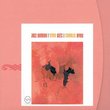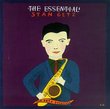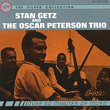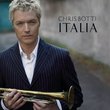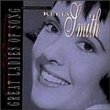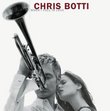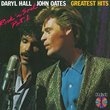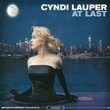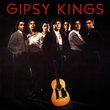| All Artists: Stan Getz Title: Stan Getz Finest Hour Members Wishing: 0 Total Copies: 0 Label: Polygram Records Original Release Date: 6/13/2000 Release Date: 6/13/2000 Genres: International Music, Jazz, Pop Styles: South & Central America, Brazil, Cool Jazz, Latin Jazz, Modern Postbebop Number of Discs: 1 SwapaCD Credits: 1 UPC: 731454360128 |
Search - Stan Getz :: Stan Getz Finest Hour
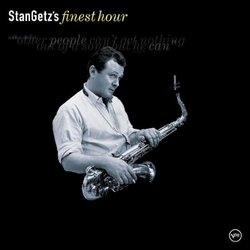 | Stan Getz Stan Getz Finest Hour Genres: International Music, Jazz, Pop
Stan Getz had one of the most beautiful sounds in jazz history, a light, transparent gauze that mingled high and lows, grit and sweetness. More than just a tone, it was an airy, shifting, living thing that was one with his... more » |
Larger Image |
CD DetailsSynopsis
Amazon.com Stan Getz had one of the most beautiful sounds in jazz history, a light, transparent gauze that mingled high and lows, grit and sweetness. More than just a tone, it was an airy, shifting, living thing that was one with his mercurial improvisations, his sinuous flow of lyrical ideas, and his kinetic, shifting phrases. It was a sound that arrangers loved to work with, and he's matched here with strings and brass, as well as with the small groups that were his typical settings. The ballads here--such as Ralph Burns's "Early Autumn"--are gorgeous, and Getz could bring cool-school lightness to the fastest bop tempos. His sound was an ideal match for the lightly percolating rhythms of bossa nova, with hits like "Desafinado" and "Girl from Ipanema," and it's hard to imagine the Brazilian rhythm's becoming so popular without him. Almost always beautiful, Getz's playing could also be adventurous, as on "I'm Late, I'm Late," with Eddie Sauter's angular, atonal string writing, and "Symptones," from a session with Francy Boland's big band. No hour of music could capture Getz's creative range, but this is an excellent introduction that focuses on some of his stellar moments. --Stuart Broomer Similar CDs
Similarly Requested CDs
|
CD ReviewsMany settings and moods for Stan the Man... William E. Adams | Midland, Texas USA | 01/04/2003 (5 out of 5 stars) "This compliation covers the sax player's best work between 1955 and '71 in only ten selections totalling 60 minutes. As an introduction to Getz, or just as an enjoyable jazz disc, I don't see how it could have been better. Some Bossa Nova is here, of course, but we also get Stan with orchestra, and with pianists, and guitarists, and vibes players. Some of the "name" artists who contribute: Oscar Peterson, Herb Ellis, Ray Brown, Connie Kay, Shelly Manne, Charlie Byrd, Joao Gilberto, Antonio Jobim, Astrud Gilberto, Gary McFarland, Doc Severinsen, Hank Jones, Jim Hall, Herbie Hancock, Kenny Clarke and Chick Corea. The star, however, is always Getz. There is a nice balance here of tempo and mood and well-known v. obscure selections. If you like jazz sax in general, Stan in particular, don't miss this one." AN EXCELLENT AND OH SO SMOOTH ALBUM Stephan Mayer | sacramento, ca United States | 02/20/2003 (5 out of 5 stars) "Stan Getz without ANY doubt was the greatest saxophone player ever to walk the planet. NO one had that smooth and melodic tune. In fact, this album represent a good balance between very melodic romantic tunes, bossa nova (oh yes) and of course some wild swinging stuff. While I prefer the bossa nova and more mellow tunes, this album represent a good balance and place to begin for any recent or long time Stan Getz fan." Girl From Ipanema deserves 5 stars alone Drew Hunkins | Madison, WI United States | 07/27/2002 (5 out of 5 stars) "Aside from having one of the greatest records in music history on this sensational album (Girl from Ipanema), Getz's Finest Hour includes a healthy sampling of the great saxaphonist's work.
There are two types of jazz recordings: day and night. This album ("album" itself becoming a quaint term with CDs ruling the market place) includes a smattering of both, the day variety, which are conducive to sitting in your favorite mid-day lounge chair while sipping a cool drink; and the night fare, which are cuts that are best heard in a smokey jazz club in the middle of the night. As mentioned, Finest Hour includes mesmerizing examples of both. For an admittedly limited sampling one cannot go wrong with Getz's Finest Hour, it serves as a nice introduction into a musical genius." |

 Track Listings (10) - Disc #1
Track Listings (10) - Disc #1